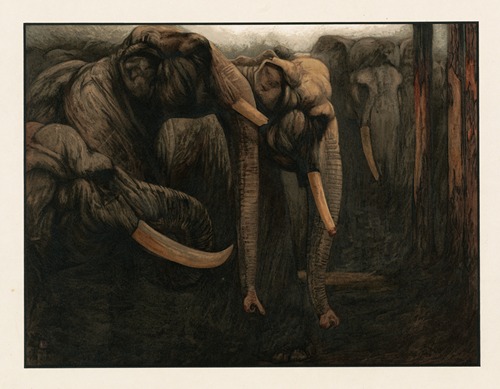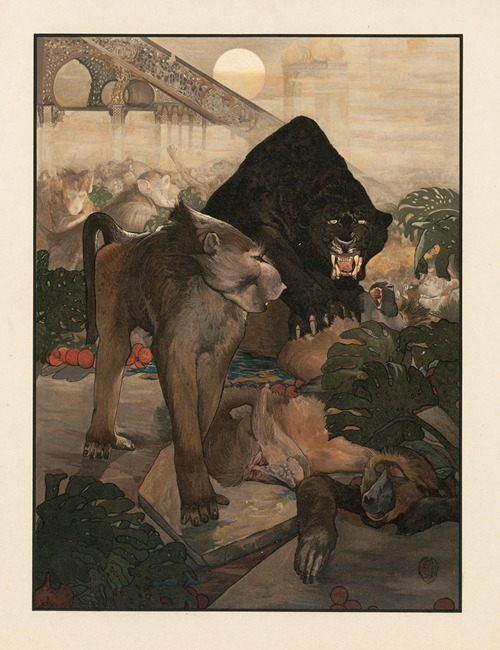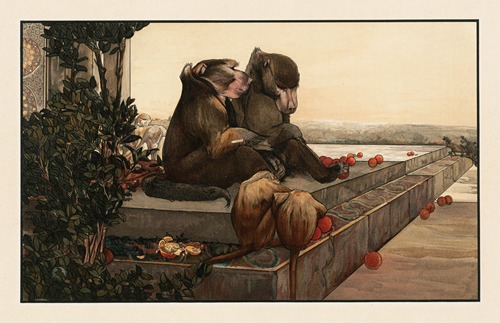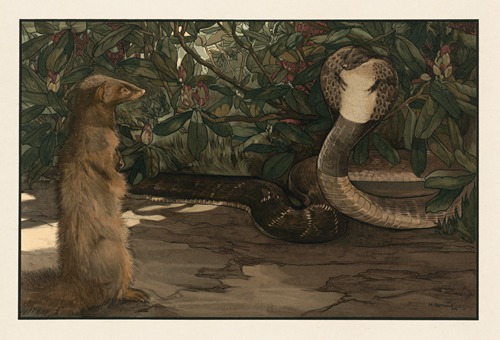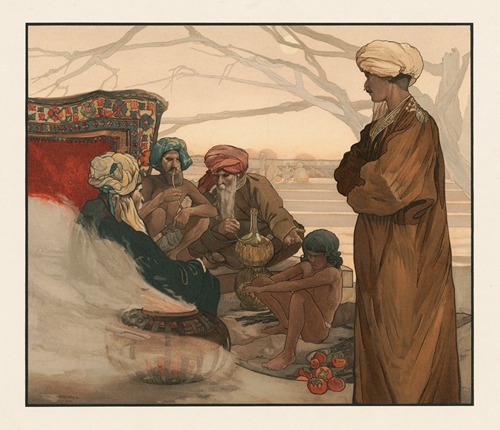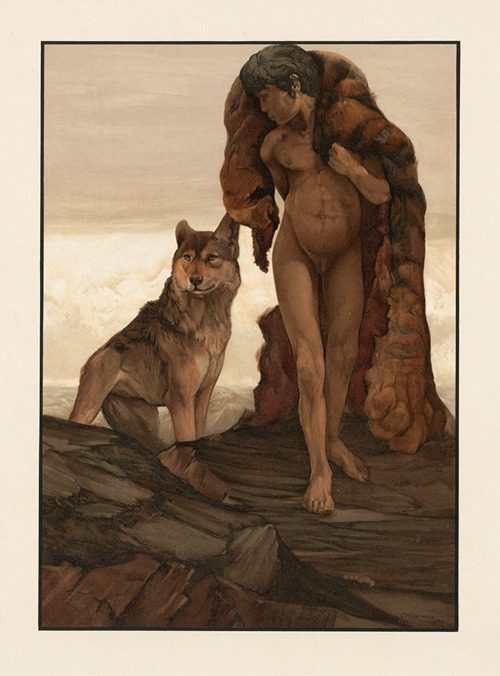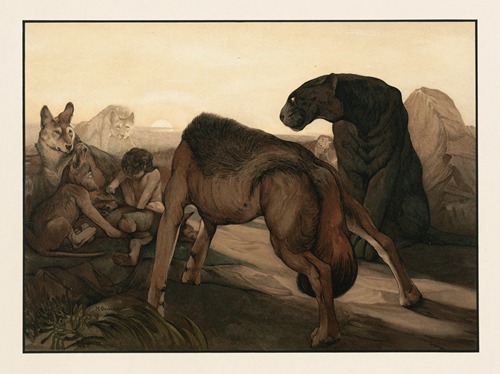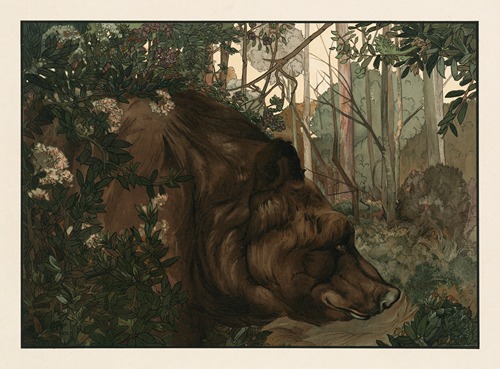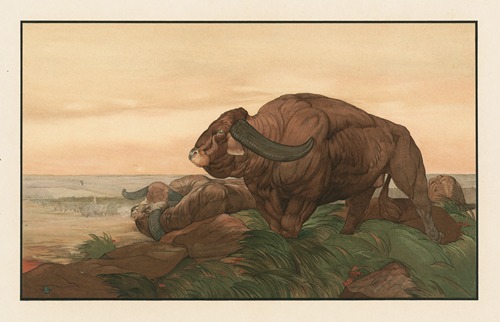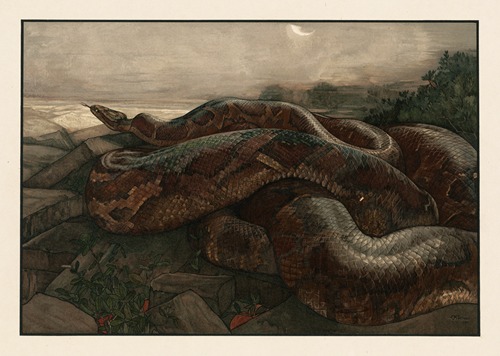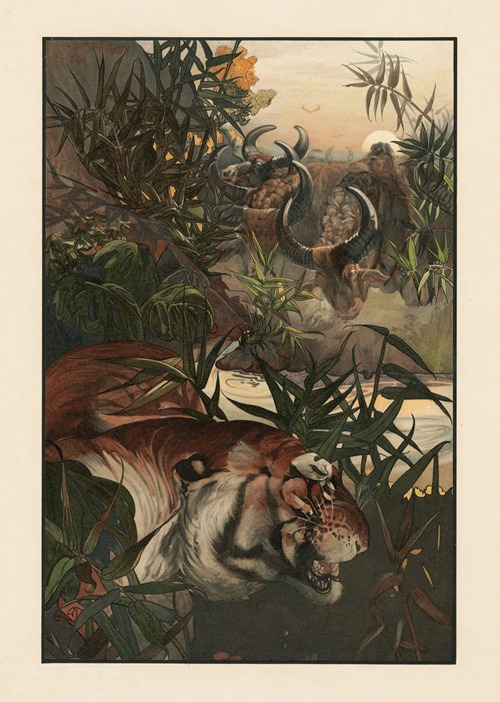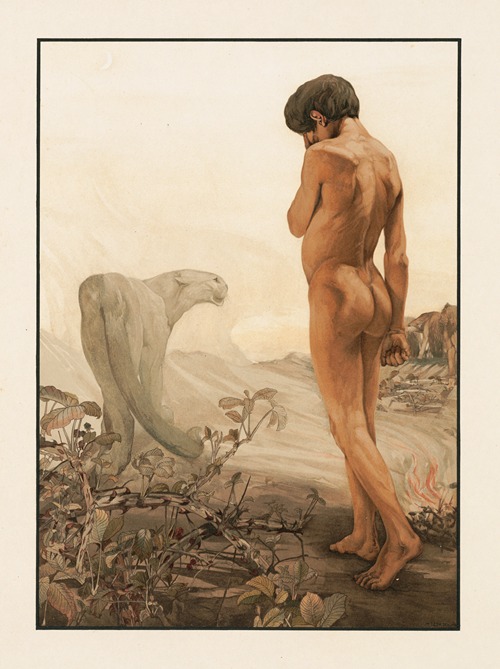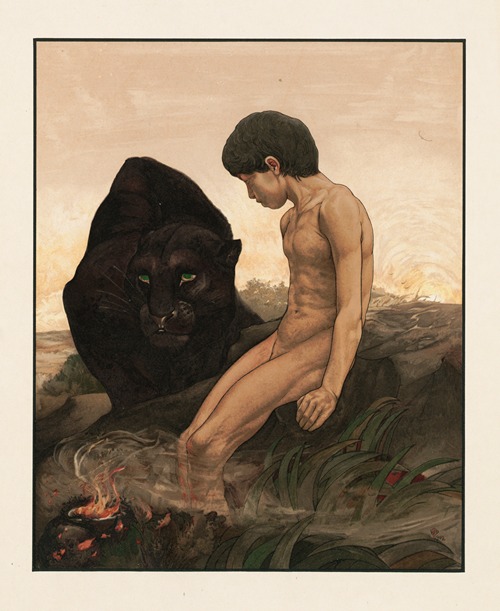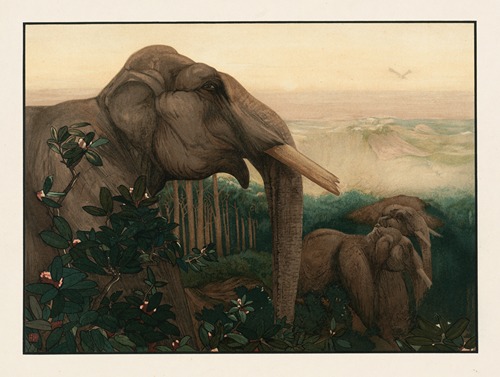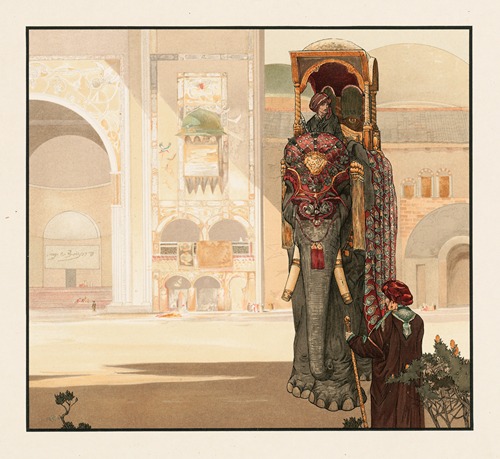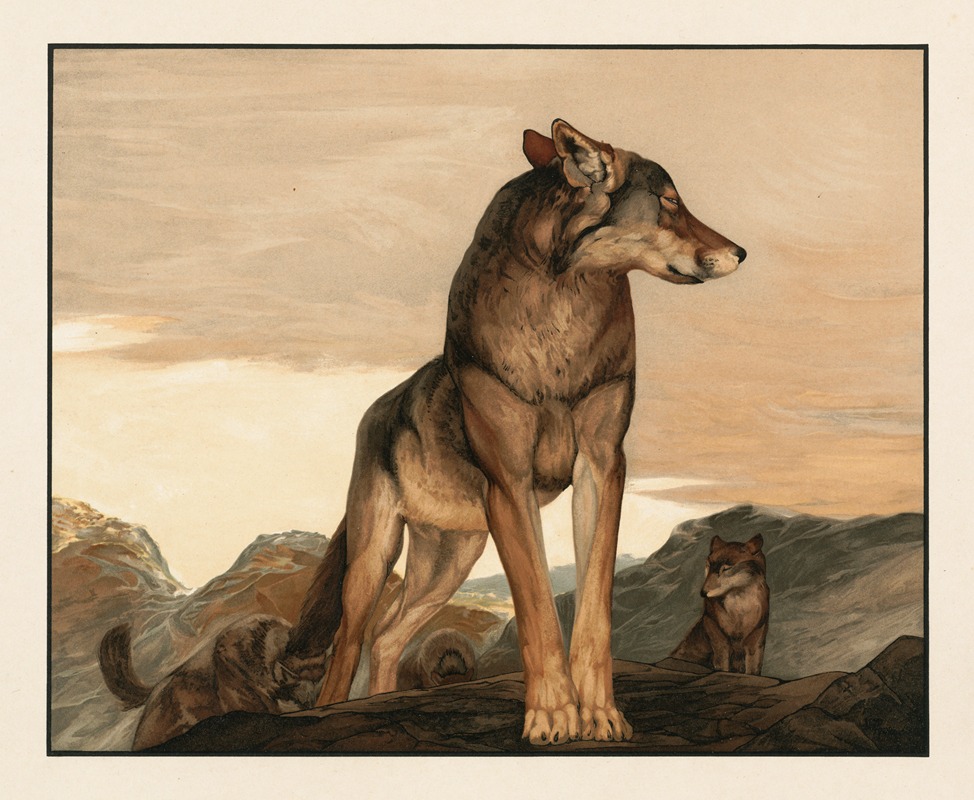

Charles Maurice Detmold and his twin brother Edward Julius Detmold were prolific Victorian and early twentieth-century book illustrators.
Their parents were Edward Detmold and Mary Agnes Luck. Their father, an electrical engineer was absent for much of their childhood, and they lived with their uncle and guardian, Dr. Edward Barton Shuldham, who saw to their tuition and was a noted collector of porcelain and Japanese woodblock prints of plants and animals. Dr. Shuldham occupied a house in Upper Richmond Road, Putney, where the twins had been born. He ensured their interest in natural history and art and created a nurturing environment for their precocious talents. They also spent time with another uncle, the painter Henry E. Detmold, who encouraged them in their art. Most of their prodigious energy was expended on depicting animal subjects and their work showed great influence from traditional Japanese art, Albrecht Dürer and later the Art Nouveau movement. They were exhibiting watercolours at the Royal Academy and the Royal Institute of Painters in Water Colours at the age of 13. Edward Burne-Jones praised their work and warned against the dangers of uniformity inherent in art schools.
The twins subsequently mastered the techniques of watercolour etching and of colour printing with copper plates, buying a printing press and producing their own proofs at home.
In 1898 they compiled a portfolio of colour etchings of animals and flowering plants done in the Japanese style. These were much sought after and were rapidly sold out. They collaborated on the etchings and illustrations for their first book Pictures From Birdland published in 1899. This book resulted from a number of drawings being shown in the autumn of 1897, to the publisher J. M. Dent, who was so impressed that the two brothers were asked to provide coloured illustrations for a book of his. The first title mooted was Alphabet of Birds, eventually becoming Pictures from Birdland. "Particularly noticeable are the early influences in the paintings, Edward's design for an osprey, with its unusual water effects, testifying to a Japanese contribution. Already apparent is that style in which a searching study of natural forms, especially bird plumage, is subordinated to the decorative arrangement" - David Larkin (The Fantastic Creatures of Edward Julius Detmold) This was followed in 1900, by an exhibition at the Fine Art Society's Gallery in London.
Their next joint project was to produce a set of 16 watercolours for Rudyard Kipling's The Jungle Book published in 1903, by Macmillan. The success of their painting careers seemed assured, but Maurice ended his life by inhaling chloroform in April 1908, shortly before they were due to leave for a holiday in Sussex with Dr Shuldham, who had arranged that Maurice put down the household cats using the anaesthetic. Although stunned by the death of Maurice, Edward threw himself into his work.
The recognition accorded the twins' illustrations of Kipling's classic tale was extraordinary. Consequently, in 1909 Edward illustrated The Fables of Aesop, producing 23 colour plates and a host of pen & ink drawings. This proved so popular that in 2006 The Folio Society of London published a facsimile of the original Hodder & Stoughton edition.
